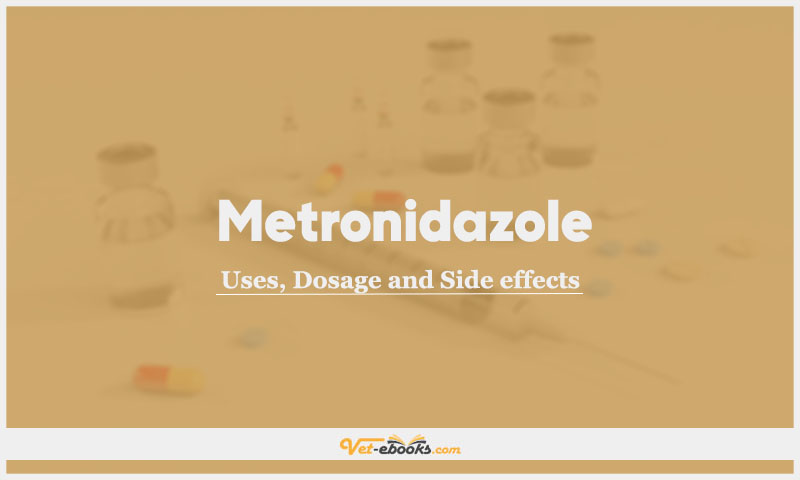Metronidazole In Dogs & Cats: Uses, Dosage and Side Effects

Overview
- Synthetic nitroimidazole with antibacterial and antiprotozoal activity.
- Its mechanism of action on protozoans is unknown.
- In bacteria, it appears to be reduced spontaneously under anaerobic conditions to compounds that bind to DNA and cause cell death.
- Spiramycin is a macrolide antibacterial that inhibits bacterial protein synthesis.
Uses of Metronidazole
- Treatment of anaerobic infections, including GI infections caused by Clostridia spp.
- Management of hepatic encephalopathy.
- Metronidazole may be used to treat chronic enteropathy due to potential effects on the immune system (modulation of cell-mediated immune responses). However, evidence of efficacy in cats and dogs is limited.
Dose of Metronidazole in Dogs and Cats
Dogs, Cats:
- Metronidazole: 7.5–25 mg/kg (standard dose 10–15 mg/kg) p.o. q12h. 10–15 mg/kg s.c., slow i.v. infusion q12h.
- The injectable solution may be given intrapleurally to treat empyema.
- Stomorgyl: 12.5 mg metronidazole + 23.4 mg spiramycin/kg p.o. (equivalent to 1 tablet/2 kg of Stomorgyl 2, 1 tablet/10 kg of Stomorgyl 10 and 1 tablet/20 kg of Stomorgyl 20) q24h for 5–10 days.
Drug Dosage Calculator
You Should Give:
Side Effects of Metronidazole in Dogs and Cats
- Vomiting, CNS toxicity (nystagmus, ataxia, knuckling, head tilt and seizures), hepatotoxicity, neutropenia and haematuria.
- Excessive salivation/foaming is noted in some cats.
- Impaired sense of smell has been reported in explosive detection dogs (resolved following drug withdrawal).
- Prolonged therapy or pre-existing hepatic disease may predispose to CNS toxicity.
Contraindications of Metronidazole in Dogs and Cats
- Avoid use during pregnancy (may be a teratogen, especially in early pregnancy).
- Reduce the dose if the drug is used in animals with hepatic disease.
Some Notes:
- Phenobarbital or phenytoin may enhance the metabolism of metronidazole.
- Cimetidine may decrease the metabolism of metronidazole.
- Spiramycin should not be used concurrently with other antibiotics of the macrolide group as the combination may be antagonistic.
- It is absorbed well from the GI tract and diffuses into many tissues including bone, CSF and abscesses.
- Spiramycin (a constituent of Stomorgyl) is active against Gram-positive aerobes including Staphylococcus, Streptococcus, Bacillus and Actinomyces.
- Metronidazole is frequently used in combination with penicillin or aminoglycoside antimicrobials to extend the spectrum of activity.
- There is a greater risk of adverse effects with rapid i.v. infusion or high total doses.
- It is no longer used in dogs and cats for the treatment of giardiasis as fenbendazole and others are preferred.
Tip
Do You Want To Increase Your Veterinary Knowledge and Practical Skills?
You Can Now Browse and Download +3000 Books For Veterinary Professionals & Students Online.
Download Veterinary Books




















